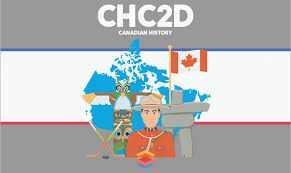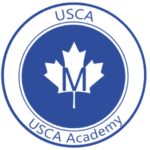CHC2D Course (Grade 10 Canadian History)
Send Us A Message
CHC2D - Grade 10 Canadian History Since World War I

Course Code: CHC2D
Course Type: University Preparation
Credit Value: 1.0
Format: Online School Course
Prerequisite:None
Tuition Fee (CAD): $574
Course Description For CHC2D Grade 10 Canadian History Since World War I Online Course
This course looks at the social, economic, and political changes that shaped Canada since 1914. It focuses on key events, important people, and organizations that influenced Canadian identity, citizenship, and heritage. Students will dive into themes like conflict and cooperation within Canadian society. They will also discuss the evolution of Canada’s role in the world.
In this task, students will demonstrate historical thinking and use the methods of historical inquiry. They will examine facts and study essential topics and incidents in the history of Canada. CHC2D allows students to know about history in certain ways. This way they are able to grasp how history influenced today’s Canada. As a result, they gain a deeper insight into our nation’s rich and diverse heritage.
Summary Of Units And Timelines For Grade 10 Canadian History Since World War I CHC2D
Unit
Titles and Descriptions
Time and Sequence
Unit 1
First World War
This unit discusses Canada’s role in the First World War, and how it contributed to Canadian identity. It will address the issues of Canadian sovereignty, French- English relations, and the Aboriginal contribution to the war effort. The unit will also examine how, during this period and because of the war, the economy, the status of women, and immigration policy all changed.
14 hours
Unit 2
The Roaring Twenties?
This unit will address the following questions: How did Canada exert and gain sovereignty during this period? Why is it significant that Canada’s sovereignty was recognized by other nations? How did the political climate of Canada change during this period of time? Why were these changes significant? How did the economic state of regions of Canada, Canada as a whole, and the world, influence events and attitudes in Canada during this time? How have Canadian attitudes towards human rights changed since the 1920s?
15 hours
Unit 3
The Great Depression
This unit examines the ways in which the Great Depression affected Canadians’ daily lives, as well as the changes in Canadian domestic and international policies. This period marks the rise of Socialism, the Cooperative Commonwealth Federation, and new social welfare policies. In keeping with the course’s larger themes, this unit also addresses the issue of Canadian identity and sovereignty with the introduction of the Statute of Westminster (1931).
15 hours
Unit 4
Second World War
The Second World War was a major turning point in Canadian (and World) history. WWII was the deadliest conflict in human history. This, in addition to the mass slaughter of civilians during this time, led to massive social, political, and economic changes in Canada, and throughout the world. International organizations were implemented to make sure atrocities, such as the Holocaust, would never occur again. Citizens felt entitled to more rights and a higher standard of living after what they had contributed to their country. This led to the formation of many human rights organizations, and the implementation of new social welfare policies.
15 hours
Unit 5
Challenge and Change
This unit examines in greater depth the social, political and cultural themes from the previous unit. During this era, racist policies were removed from immigration orders, the fight for equal pay for women began in earnest, and status Aboriginals were finally given the right to vote without having to give up being status Aboriginals. Refugees, once turned away from Canada’s borders, entered by the hundreds of thousands. However, despite these improvements to human rights, conflict continued. The Cold War started immediately after WWII between western capitalist democracies and eastern communist dictatorships, both sides testing nuclear bombs in Korea, Vietnam and elsewhere.
15 hours
Unit 6
Canadian Identity
This unit deals with the era in Canada that spans Trudeau’s time as Prime Minister (with an interlude in 1979 of Joe Clark’s premiership). It was a time when Québec nationalism turned to sovereigntism, when the West’s wealth grew rich through hard work in the oil fields, and when Acadians fought for access to the same services as their English compatriots. Canada was forever changed directly by Trudeau’s changes, like his policies on bilingualism, multiculturalism and environmentalism. The Charter of Rights and Freedoms, which Canadians celebrate and enjoy to this day, is also a legacy of Trudeau’s government. On the other hand, much of modern history can be seen as a reaction to Trudeau’s policies. The Québec referenda in 1980 and 1995 were held partly in response to Trudeau’s hardline federalism. Civil rights groups still debate his response to terrorism in 1970, and financial analysts still debate his attitude towards the country’s money.
15 hours
Unit 7
Global Context
This unit examines the theme of French-English relations with a discussion of the patriation of the constitution and the failure of the Meech Lake and Charlottetown accords, and the Québec referendum in 1995. It will also study the fall of the Berlin Wall in 1989, and the end of the Cold War. With only one super-power left in the world, politics became, in some ways, more complex. The European Union was born; Iraq became an enemy state to the West; Yugoslavia and Rwanda became notorious during periods of intense violence. Undoubtedly, the greatest sea change was the terrorist attack of September 11, 2001, and the world’s response to it, which continues to this day.
14 hours
Unit 8
Project
For this assignment, students will produce a virtual museum (digital or online) exhibit on a specific topic in Canadian history. The exhibit can be presented via website, blog, PowerPoint, Prezi presentation or another media form (to be approved by the student’s teacher). This assignment is worth 10% of the overall grade.
5 hours
Final Evaluation
The final assessment is a two hour exam on Nutrition worth 20% of the student’s final mark.
2 hours
Total
110 hours
Canadian History CHC2D
Teaching & Learning Strategies includes:
- modeled, shared and guided instruction
- Video-conferences and gym time Brainstorming
- Independent study/ health log Practical experience
- Cooperative group learning
- Portfolio Role Playing and Case scenarios
- Experiential learning
- Independent research Teacher analysis
- Active participation Presentations
- Robust thinking (critical analysis and reflection).
- Internet and multimedia (i.e. human body) Use of game console (Wii console; Wii fit)
- other agencies presentations
Canadian History CHC2D: Assessment and evaluation will follow the Ministry of Education’s Growing Success document. Assessment is a systematic process of collecting information or evidence about a student’s progress towards meeting the learning expectations. Assessment is embedded in the instructional activities throughout a unit. The expectations for the assessment tasks are clearly articulated and the learning activity is planned to make that demonstration possible. This process of beginning with the end in mind helps to keep focus on the expectations of the course. The purpose of assessment is to gather the data or evidence and to provide meaningful feedback to the student about how to improve or sustain the performance in the course. Scaled criteria designed as rubrics are often used to help the student to recognize their level of achievement and to provide guidance on how to achieve the next level. Although assessment information can be gathered from a number of sources (the student himself, the student’s course mates, the teacher), evaluation is the responsibility of only the teacher. For evaluation is the process of making a judgment about the assessment information and determining the percentage grade or level.
The assessment will be based on the following processes that take place in the classroom:
| Assessment FOR Learning | Assessment AS Learning | Assessment OF Learning |
|---|---|---|
During this process the teacher seeks information from the students in order to decide where the learners are and where they need to go. | During this process the teacher fosters the capacity of the students and establishes individual goals for success with each one of them. | During this process the teacher reports student’s results in accordance to established criteria to inform how well students are learning. |
| Conversation | Conversation | Conversation |
Classroom discussion Self-evaluation Peer assessment | Classroom discussion Small group discussion Post-lab conferences | Presentations of research Debates |
| Observation | Observation | Observation |
| Drama workshops (taking direction) Steps in problem solving | Group discussions | Presentations Group Presentations |
| Student Products | Student Products | Student Products |
| Reflection journals (to be kept throughout the duration of the course) Check Lists Success Criteria | Practice sheets Socrative quizzes | Projects Poster presentations Tests In Class Presentations |
The evaluation of this course is based on the four Ministry of Education achievement categories of knowledge and understanding (25%), thinking (25%), communication (25%), and application (25%). . The evaluation for this course is based on the student’s achievement of curriculum expectations and the demonstrated skills required for effective learning.
The percentage grade represents the quality of the student’s overall achievement of the expectations for the course and reflects the corresponding level of achievement as described in the achievement chart for the discipline.
A credit is granted and recorded for this course if the student’s grade is 50% or higher. The final grade for this course will be determined as follows:
- 70% of the grade will be based upon evaluations conducted throughout the course. This portion of the grade will reflect the student’s most consistent level of achievement throughout the course, although special consideration will be given to more recent evidence of
- 30% of the grade will be based on a final exam administered at the end of the The exam will contain a summary of information from the course and will consist of well-formulated multiple choice questions. These will be evaluated using a checklist.
Textbook
McGraw-Hill Ryerson Creating Canada: A History – 1914 to the Present Second Edition © 2014
Potential Resources
Access to various internet websites for guided research activities
Frequently Asked Questions (FAQ)
The course covers key social, economic, and political developments in Canada from 1914 onwards, including World Wars, the Great Depression, human rights progress, and Canada’s global role.
The course employs diverse methods like independent research, group discussions, role-playing, multimedia tools, and critical analysis exercises.
Yes, students will create a virtual museum exhibit worth 10% of the grade and take a final exam worth 20%.
70% of the grade comes from ongoing evaluations, and 30% comes from the final project and exam.
The textbook is McGraw-Hill Ryerson Creating Canada: A History – 1914 to the Present, Second Edition © 2014.
